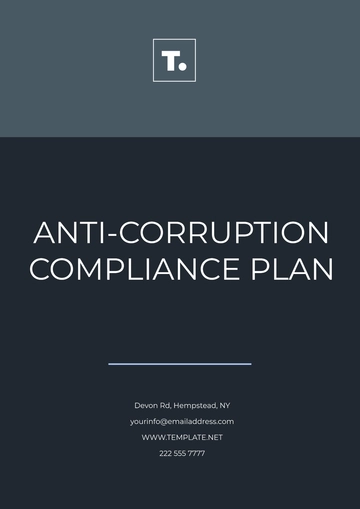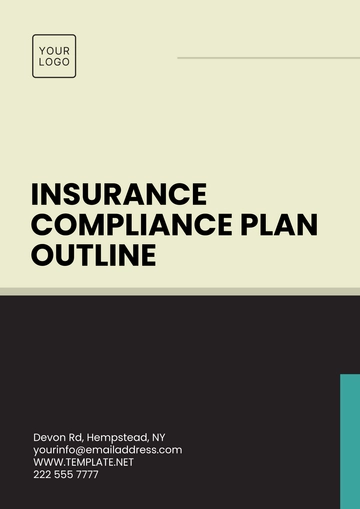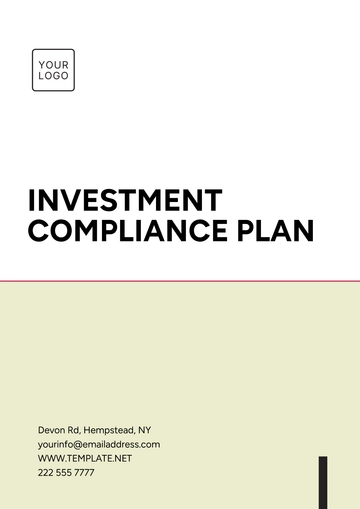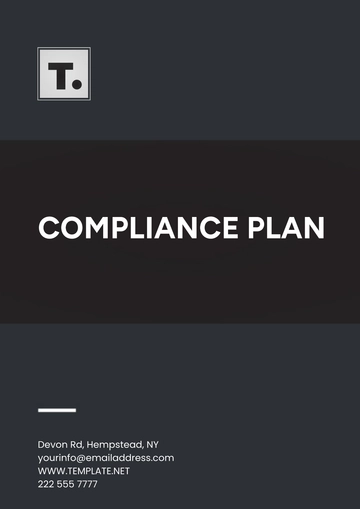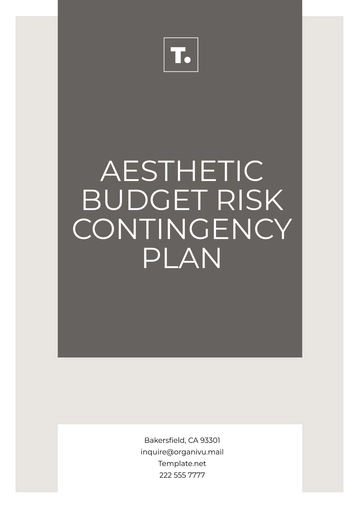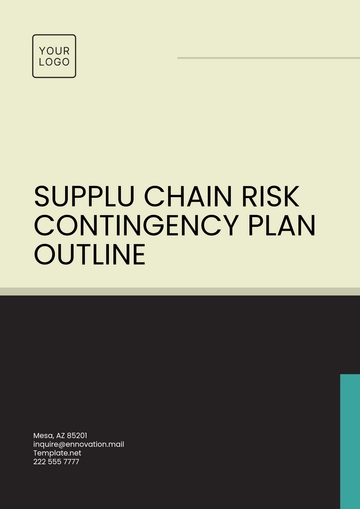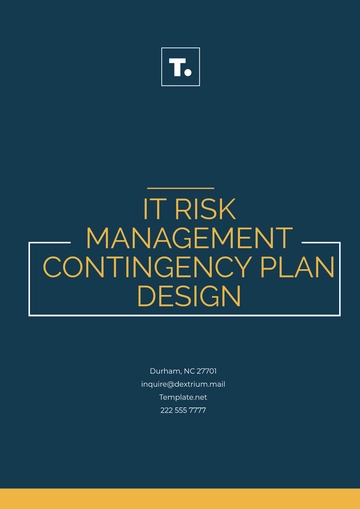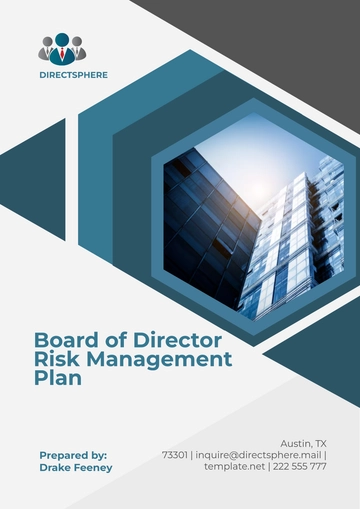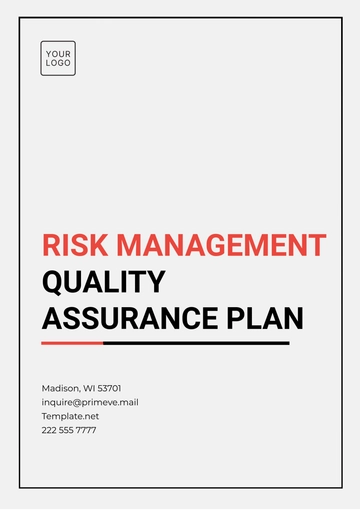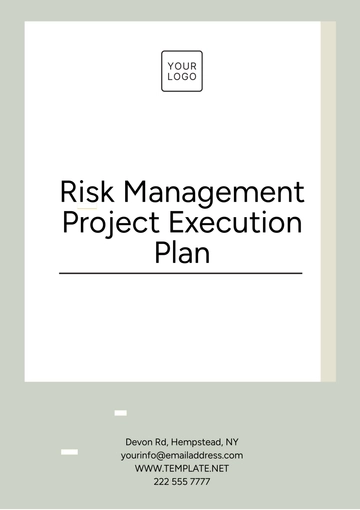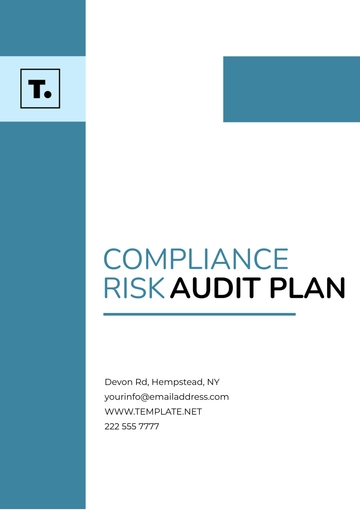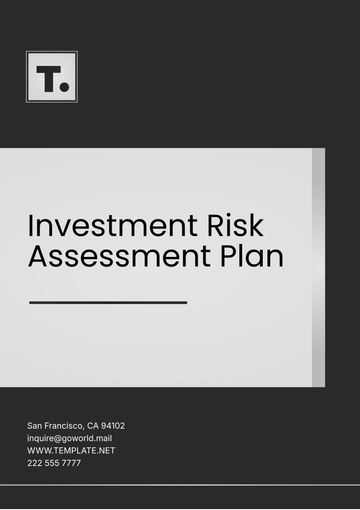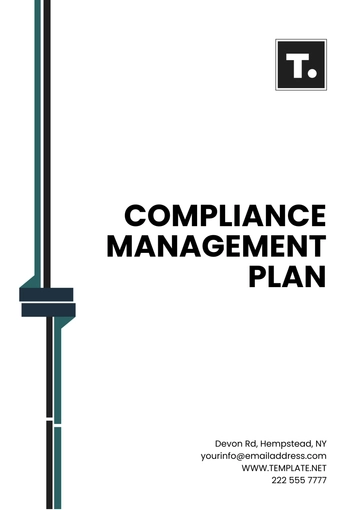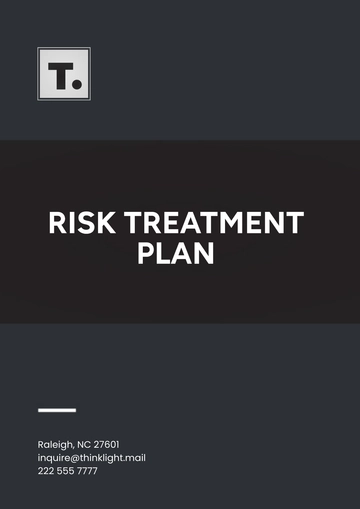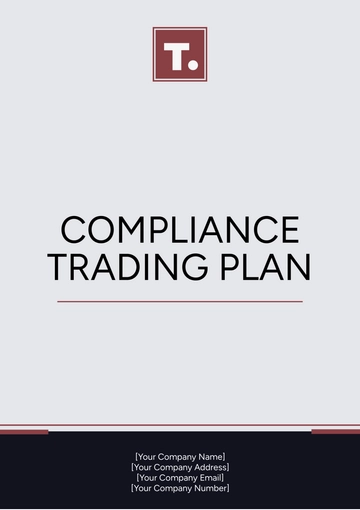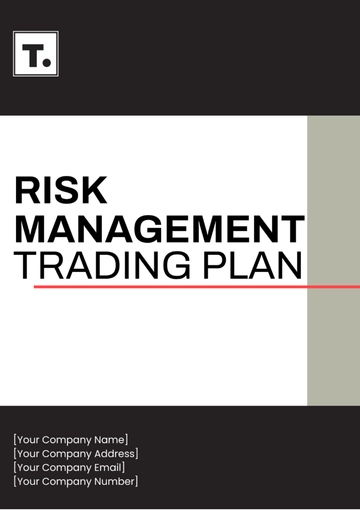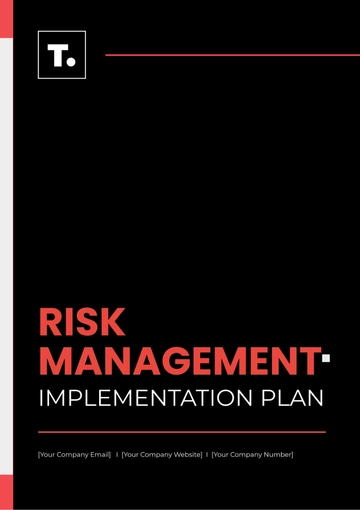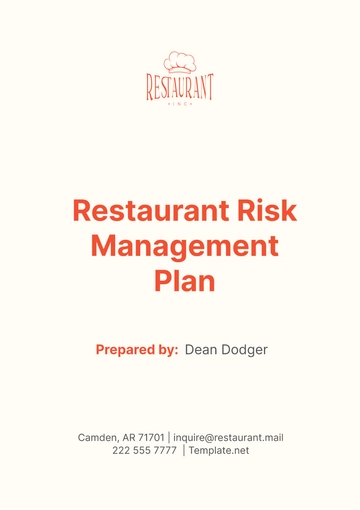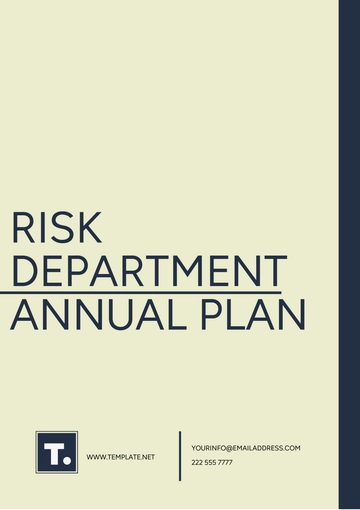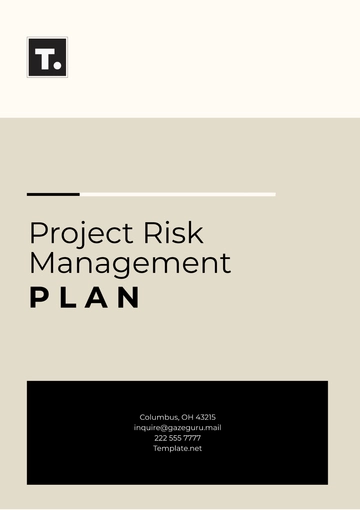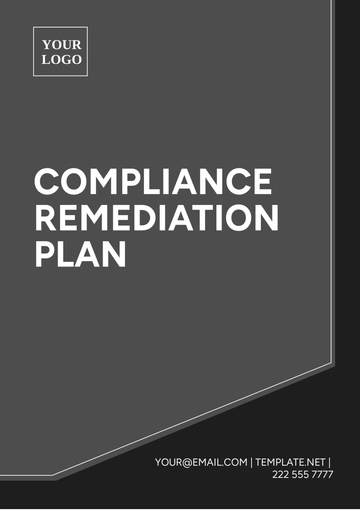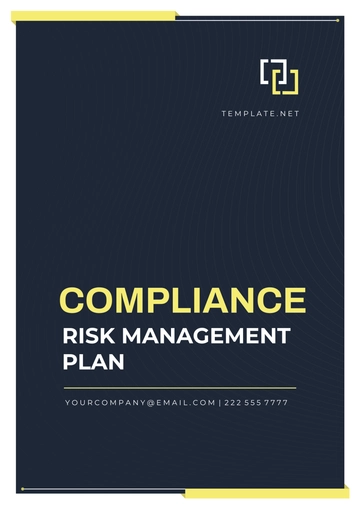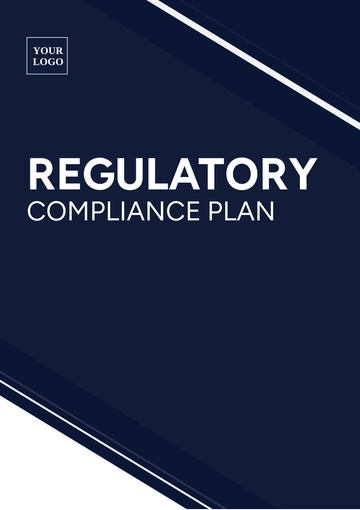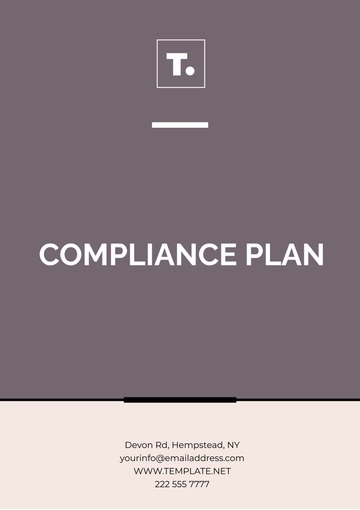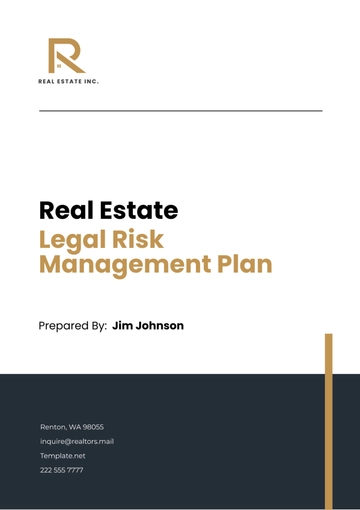Free Project Risk Management Plan
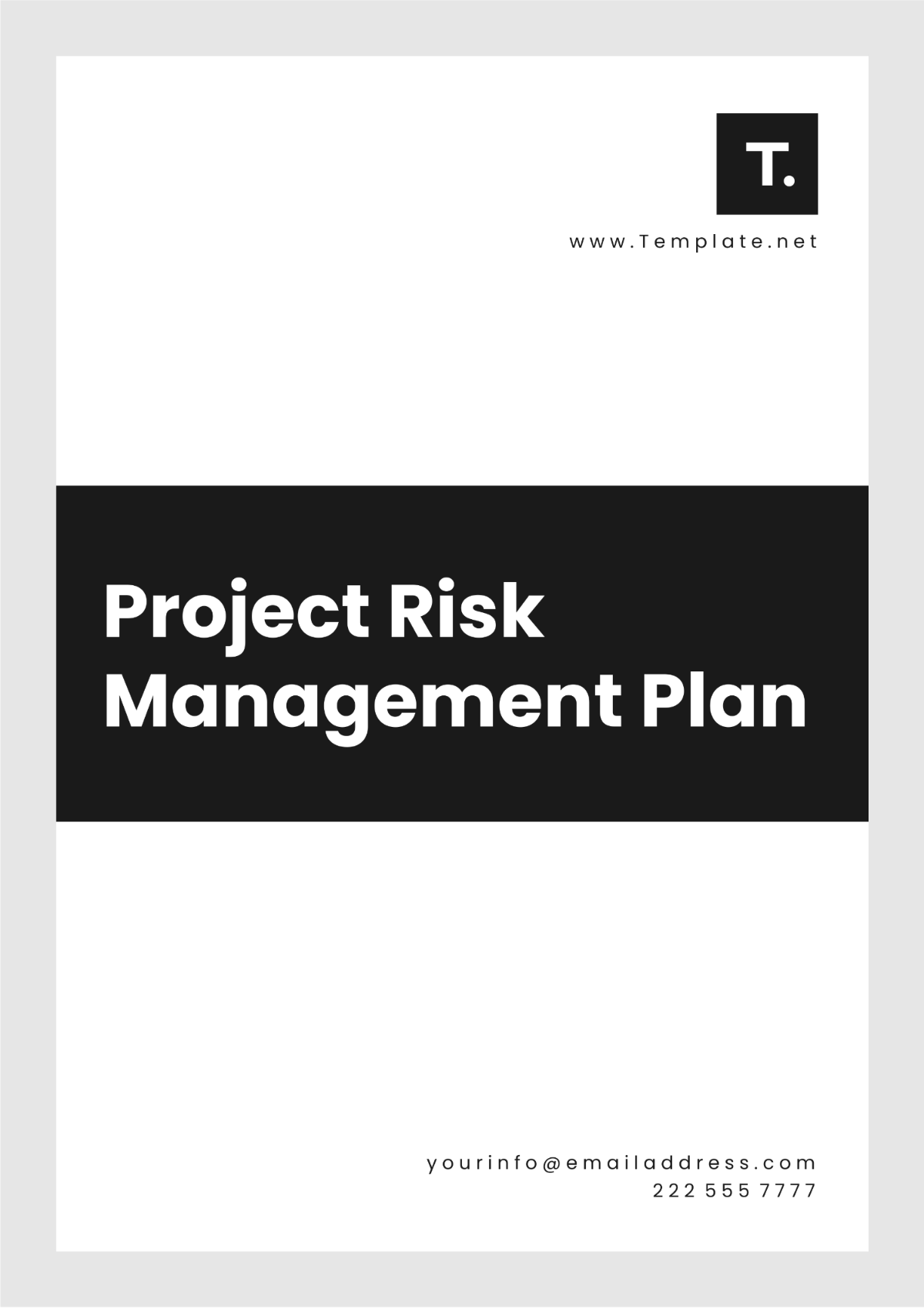
Name : | [Your Name] |
Company Name : | [Your Company Name] |
Project : | [Project Name] |
Date : | [Date] |
I. Project Overview
The [Project Name] is a strategic project undertaken by [Your Company Name] to introduce a groundbreaking consumer electronics product into the market. It aims to revolutionize the way consumers interact with technology by offering innovative features and cutting-edge design. The project's primary objectives include developing and manufacturing the new product, creating an effective marketing campaign to generate consumer interest, and ensuring a successful launch within the next [Number] months.
The project is critical for [Your Company Name] as it represents a significant investment in research and development and has the potential to drive revenue growth and enhance the company's competitive position in the industry. Effective risk management is essential to navigate the uncertainties associated with product development, market dynamics, and competitive pressures, thereby safeguarding the project's success and maximizing return on investment.
II. Risk Identification
Identifying potential risks is crucial to proactively address challenges that may arise during the project. Risks associated with the [Project Name] project include:
Delays in material delivery
Changes in client requirements
Weather-related delays
Technical issues with equipment or tools
Budget overruns
III. Risk Analysis
Each identified risk will undergo a comprehensive analysis to assess both its likelihood of occurrence and its potential impact on the project. This analysis is essential for prioritizing risks and determining appropriate mitigation strategies.
The likelihood of each risk event occurring will be evaluated based on historical data, expert judgment, and current project conditions. Factors such as past experience, industry trends, supplier reliability, and external influences will be considered. Risks will be categorized into low, medium, or high likelihood based on the probability of occurrence.
Low Likelihood: Risks with a low likelihood of occurrence are those that have minimal chances of happening during the project. These risks may still be monitored but are unlikely to significantly impact project outcomes.
Medium Likelihood: Risks with a medium likelihood of occurrence have a moderate chance of happening during the project. These risks require closer monitoring and may necessitate proactive measures to mitigate their impact.
High Likelihood: Risks with a high likelihood of occurrence are those that are highly probable to happen during the project. These risks pose a significant threat to project success and require immediate attention and mitigation efforts.
IV. Risk Response Planning
Based on the risk analysis, appropriate responses will be planned for each identified risk. Strategies will include:
Develop a contingency plan for material delays, such as sourcing from alternate suppliers.
Establish clear communication channels with the client to manage changes in requirements efficiently.
Monitor weather forecasts and adjust the project schedule accordingly.
Regular maintenance and inspection of equipment to prevent technical issues.
Implement cost-saving measures to mitigate budget overruns.
V. Risk Monitoring and Control
Throughout the project lifecycle, risks will be monitored and controlled to ensure that the risk management plan remains effective. This involves tracking identified risks, assessing their status and impact, and implementing appropriate responses as necessary.
Regular risk reviews will be conducted during project meetings to update risk registers, evaluate the effectiveness of risk responses, and identify new risks that may arise. Additionally, changes in project scope, schedule, or budget will be assessed for their impact on existing risks, and risk management strategies adjusted accordingly.
VI. Communication and Reporting
Effective communication of risks is essential for ensuring that stakeholders are aware of potential threats to the project and can contribute to risk management efforts. A communication plan will be developed to define roles and responsibilities for risk communication, identify key stakeholders, determine communication channels and frequency, and establish protocols for reporting risk-related information.
Regular risk reports will be prepared and distributed to stakeholders to provide updates on risk status, trends, and mitigation activities. Open communication channels will be maintained to encourage stakeholders to raise concerns, share insights, and contribute to risk management efforts.
VII. Contingency Planning
In addition to proactive risk management strategies, contingency plans will be developed to address unforeseen risks that may occur during the project. Contingency planning involves identifying potential triggers for activating contingency plans, defining specific actions to be taken in response to each trigger, and allocating resources and responsibilities for implementing contingency measures. Contingency plans will be developed for high-impact risks that cannot be fully mitigated through proactive measures, ensuring that the project team is prepared to respond effectively to unexpected events.
- 100% Customizable, free editor
- Access 1 Million+ Templates, photo’s & graphics
- Download or share as a template
- Click and replace photos, graphics, text, backgrounds
- Resize, crop, AI write & more
- Access advanced editor
Navigate project risks like a pro with our Project Risk Management Plan Template, offered by Template.net. This customizable, downloadable, and printable tool empowers you to identify, assess, and mitigate risks effectively. From risk registers to response strategies, it's all covered. Editable in our AI Editor Tool, it adapts to your project's unique needs, ensuring you stay ahead of potential pitfalls and safeguard success.
You may also like
- Finance Plan
- Construction Plan
- Sales Plan
- Development Plan
- Career Plan
- Budget Plan
- HR Plan
- Education Plan
- Transition Plan
- Work Plan
- Training Plan
- Communication Plan
- Operation Plan
- Health And Safety Plan
- Strategy Plan
- Professional Development Plan
- Advertising Plan
- Risk Management Plan
- Restaurant Plan
- School Plan
- Nursing Home Patient Care Plan
- Nursing Care Plan
- Plan Event
- Startup Plan
- Social Media Plan
- Staffing Plan
- Annual Plan
- Content Plan
- Payment Plan
- Implementation Plan
- Hotel Plan
- Workout Plan
- Accounting Plan
- Campaign Plan
- Essay Plan
- 30 60 90 Day Plan
- Research Plan
- Recruitment Plan
- 90 Day Plan
- Quarterly Plan
- Emergency Plan
- 5 Year Plan
- Gym Plan
- Personal Plan
- IT and Software Plan
- Treatment Plan
- Real Estate Plan
- Law Firm Plan
- Healthcare Plan
- Improvement Plan
- Media Plan
- 5 Year Business Plan
- Learning Plan
- Marketing Campaign Plan
- Travel Agency Plan
- Cleaning Services Plan
- Interior Design Plan
- Performance Plan
- PR Plan
- Birth Plan
- Life Plan
- SEO Plan
- Disaster Recovery Plan
- Continuity Plan
- Launch Plan
- Legal Plan
- Behavior Plan
- Performance Improvement Plan
- Salon Plan
- Security Plan
- Security Management Plan
- Employee Development Plan
- Quality Plan
- Service Improvement Plan
- Growth Plan
- Incident Response Plan
- Basketball Plan
- Emergency Action Plan
- Product Launch Plan
- Spa Plan
- Employee Training Plan
- Data Analysis Plan
- Employee Action Plan
- Territory Plan
- Audit Plan
- Classroom Plan
- Activity Plan
- Parenting Plan
- Care Plan
- Project Execution Plan
- Exercise Plan
- Internship Plan
- Software Development Plan
- Continuous Improvement Plan
- Leave Plan
- 90 Day Sales Plan
- Advertising Agency Plan
- Employee Transition Plan
- Smart Action Plan
- Workplace Safety Plan
- Behavior Change Plan
- Contingency Plan
- Continuity of Operations Plan
- Health Plan
- Quality Control Plan
- Self Plan
- Sports Development Plan
- Change Management Plan
- Ecommerce Plan
- Personal Financial Plan
- Process Improvement Plan
- 30-60-90 Day Sales Plan
- Crisis Management Plan
- Engagement Plan
- Execution Plan
- Pandemic Plan
- Quality Assurance Plan
- Service Continuity Plan
- Agile Project Plan
- Fundraising Plan
- Job Transition Plan
- Asset Maintenance Plan
- Maintenance Plan
- Software Test Plan
- Staff Training and Development Plan
- 3 Year Plan
- Brand Activation Plan
- Release Plan
- Resource Plan
- Risk Mitigation Plan
- Teacher Plan
- 30 60 90 Day Plan for New Manager
- Food Safety Plan
- Food Truck Plan
- Hiring Plan
- Quality Management Plan
- Wellness Plan
- Behavior Intervention Plan
- Bonus Plan
- Investment Plan
- Maternity Leave Plan
- Pandemic Response Plan
- Succession Planning
- Coaching Plan
- Configuration Management Plan
- Remote Work Plan
- Self Care Plan
- Teaching Plan
- 100-Day Plan
- HACCP Plan
- Student Plan
- Sustainability Plan
- 30 60 90 Day Plan for Interview
- Access Plan
- Site Specific Safety Plan
